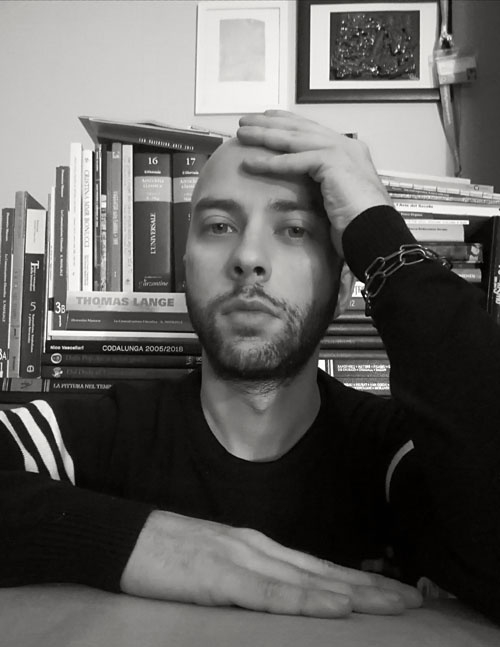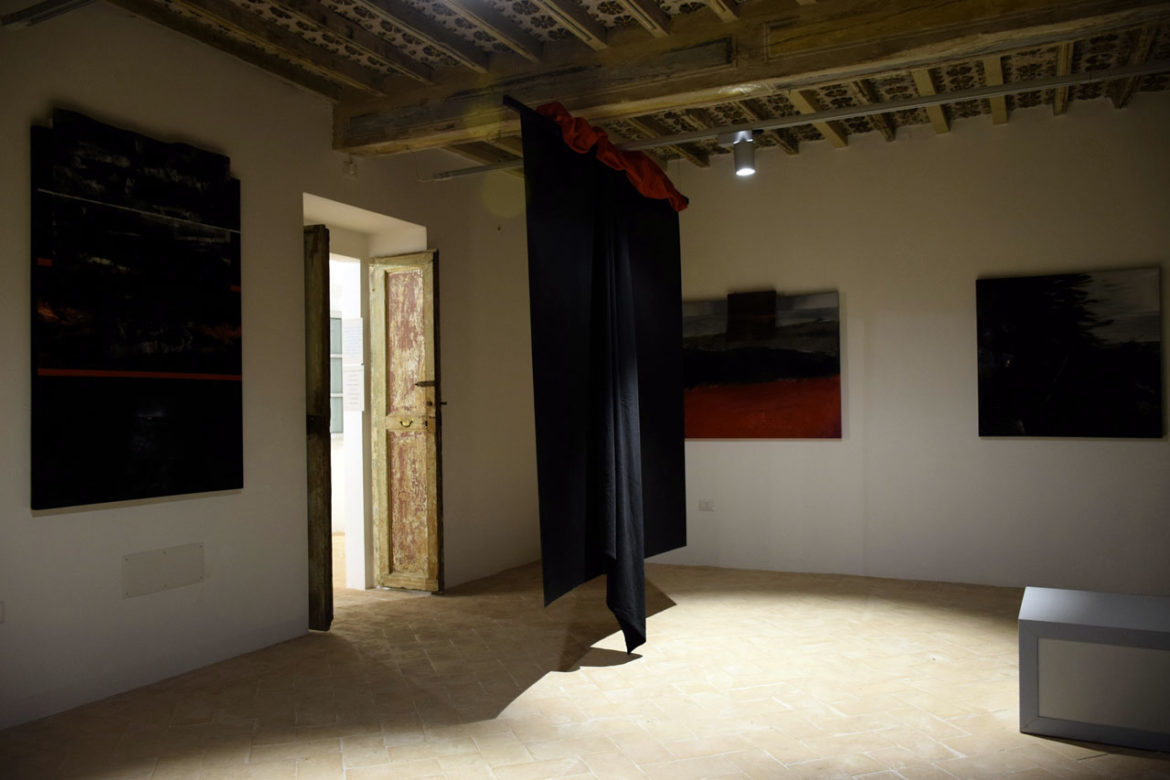Inaugurated on August 10th in Torgiano at the Palazzo Graziani Baglioni exhibition space, Giuliano Giuman‘s solo show Amor Doppio (Double Love), curated by Marina Bon Valsassina, shows more than fifty works realized from 2017 to today, equivalent to the latest researches of the artist on the expressive possibilities and on aesthetic relationship between glass and canvas, always in the sign of color and painting. The exhibition, which welcomes the visitor already in the green outdoor spaces of the ancient bulding where five installations are placed simultaneously with the architecture and the environment, is divided into five rooms on the upper floor, presenting a preparation suitable to describe the variety of the many solutions present here. In fact, this is a corpus of works belonging to the same creative period which therefore, despite its diversity, visibly demonstrates its own organic unity. These are the result of the artist’s study on what can be considered his two most relevant disciplinary interests, as well as his favorite expressive means: painting and glass.
So these are the two loves, or better, the double love of the Master towards two materials that have always characterized, with different accents, his activity and that in the exhibition in question interact, compare and coexist in the physical and conceptual perimeter of a single artwork. The artworks show an aniconic language, silent and focused on experimentation of their narrative media – but not for this less emotionally readable – as the color resolution, sometimes denser while others more rarefied accompanied by the choice of iridescent colors in some cases and softer in others, formal relationships, sometimes rigid and almost geometric, while others free and decidedly non-axiomatic, or gesture, in some examples clearly visible and in others contained in small variations of matter inside the painting itself. It is undoubtedly the presence of the glass painted with great fire that, with the color that deeply pervades its fibers and thanks to the relationship deriving from it with the painted canvas, besides to reminding us how the author has also been a professor of “Glass Technique” at the Brera Academy, he connotes these operations of an unprecedented sensitivity towards the two materials in question, which, by penetrating and influencing themselves, seeking new possibilities for relationships, are renewed in communication and in language skills. The room need a special mention, a sort of exhibition in the exhibition where, in a soft atmosphere, a group of artworks always in canvas, glass and painting but backlit, a particularity that gives them an evanescent look, as if they were in a epiphany process of unveiling. In the same room, there is the installation “Do not bring us into temptation”, consisting of several components like two videos, realizations on the floor and on the ground, the intervention, housed in the ancient private chapel of the building, seems, already from the title, to establish in part a mental short circuit with the votive and cathartic nature of the space, having intentionally gone the artist to “highlight, by counterpoint, fragility, doubts and uncertainties, in contrasting or complementary situations”.
Curated by Marina Bon Valsassina and hosted in the exhibition rooms of Palazzo Graziani Baglioni of Torgiano, Amor Doppio, with the glass, the canvas and the color of Giuliano Giuman, it will be open to the public with catalog on place until 13th January 2019; enjoy your visit.
 Giuliano Giuman, Non ci indurre in tentazione, 2018, installation view
Giuliano Giuman, Non ci indurre in tentazione, 2018, installation view
 Giuliano Giuman, Backlit artworks, room III
Giuliano Giuman, Backlit artworks, room III
 Giuliano Giuman, Amor Doppio, room II
Giuliano Giuman, Amor Doppio, room II

Contemporary art critic and curator, he has curated exhibitions in galleries, independent and institutional spaces. He has lectured in Italy and abroad. His texts and research are published in catalogs, sector magazines, gallery editions and monographs. He is the curator of artist archives, contributor to specialized magazines and press offices. He collaborates with foundations, public museums, publishing houses and universities on research and curatorial projects.







NO COMMENT